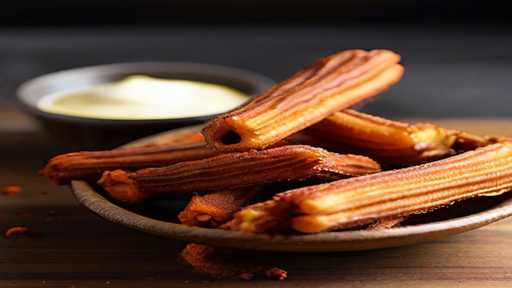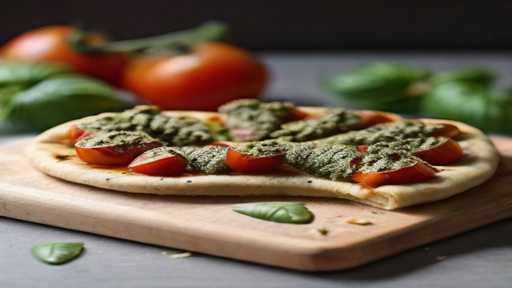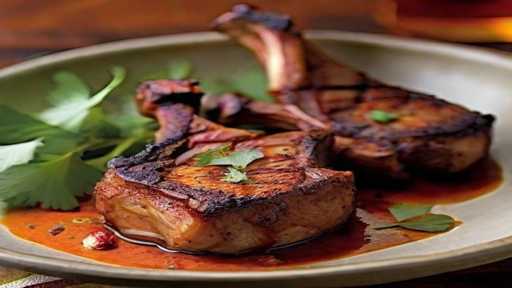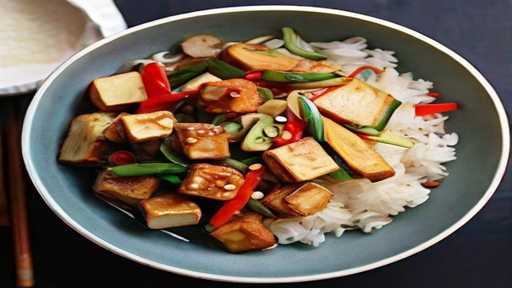Quick and easy Phat Si-io stir-fry at home
Originally from Thai cuisine, Phat Si-io stir-fry is a delicious dish known for its rich flavor. This quick and easy home recipe captures the essence of traditional Thai street food, offering a delicious experience with wide rice noodles, flavorful soy sauce, and bold vegetables.
Quick and Easy Phat Si-io stir-fry at Home
Cuisine
Thai
Total Prep Time
30 minutes
Difficulty
Easy
Ingredients for Quick and Easy Phat Si-io stir-fry:
- Ingredients:
- 1. 200 g flat rice noodles
- 2. 2 tablespoons vegetable oil
- 3. 2 cloves of garlic, chopped
- 4. 200 g chicken, sliced (for vegetarians, substitute tofu)
- 5. 1 cup broccoli florets
- 6. 1 carrot, sliced
- 7. 1 red bell pepper, sliced Slice
- 8. Dark soy sauce 2 tablespoons
- 9. Light soy sauce 1 tablespoon
- 10. Oyster sauce 1 tablespoon
- 11. Sugar 1 teaspoon
- 12. White pepper 1/2 teaspoon
- 13. 1/4 cup chicken or vegetable broth
- 14. Chopped green onions (for garnish)
- 15. Sesame seeds (optional, for garnish)
- Substitutions:
- • Substitute chicken with beef or shrimp, or make it vegetarian with tofu You can also.
- • Feel free to add or substitute vegetables according to personal preference and availability.
- • Tamari soy sauce or soy sauce can be used in place of light or dark soy sauce.
- • Fill a big saucepan with water and bring to a boil.
Cooking Instructions: Quick and Easy Phat Si-io stir-fry at Home
- How to Make:
- 1. Prepare the Rice Noodles:
- • Fill a big saucepan with water and bring to a boil.
- • Prepare rice noodles as directed on the package.
- • Drain and set aside.
- 2. Heat the wok.
- • Remove and set aside the chicken from the wok.
- • Add 1 tablespoon vegetable oil and stir until pan is coated.
- 3. Stir-fry the chicken:
- • Add the sliced chicken to the hot wok.
- • Fry until the chicken is cooked through and lightly browned.
- • Remove and set aside the chicken from the wok.
- 4. Saute the spices and vegetables:
- • Add the remaining 1 tablespoon oil to the same wok.
- • Fry the minced garlic until fragrant.
- • Add broccoli, carrots, and peppers.
- • Stir-fry the vegetables for 3 to 4 minutes, until slightly softened.
- 5. Prepare the sauce.
- • In a small bowl, combine soy sauce, oyster sauce, fish sauce, and sugar.
- • Pour the sauce over the vegetables in the wok.
- 6. Mix and simmer:
- • Return the cooked chicken to the wok.
- • Pour in the chicken broth and stir well.
- • Simmer the mixture for 2 to 3 minutes, until the sauce thickens.
- 7. Add the noodles and you’re done:
- • Carefully fold in the cooked rice noodles to coat them evenly with the sauce.
- • Mix everything together until well mixed and heated through.
- 8. Garnish and serve.
- • Scatter the chopped green onions over the pot.
- • Garnish with crushed peanuts, if desired.
- • Serve the fried fat siew warm with lime.
- 1. Prepare the Rice Noodles:
- Important points:
- • When cooking chicken, be careful not to overcook it and keep it tender.
- • Adjust spiciness by adding red pepper flakes or chili sauce to taste.
- • To prevent the noodles from sticking together, drain the water and toss with a small amount of oil.
Kitchen tools and equipment: Quickly and easily make a Phat Si-io stir-fry at home.
- 1. Wok or frying pan: Essential for frying food quickly and evenly.
- 2. Wooden spoon or spatula: Used to toss and stir ingredients in the wok.
- 3. Knife: Used for chopping and preparing vegetables and other ingredients.
- 4. Cutting Board: Provides a clean and safe surface for chopping and cutting.
- 5. Measuring spoons and cups: For accurately measuring sauces and other ingredients.
- 6. Bowl: A device used to store prepared ingredients and finished dishes.
- 7. Plate or platter: For serving the finished stir-fry.
- 8. Tongs: Useful for adding and mixing ingredients into the wok.
- 9. Garlic Press: If a recipe calls for minced garlic, a press is handy.
- 10. Grater or zester: Use to add grated ginger or citrus peel for added flavor.
- 11. Peeler: Used to peel and prepare vegetables such as carrots and potatoes.
- 12. Pot: For recipes that require the sauce to be made separately.
- 13. Colander or colander: For draining and washing pasta and vegetables.
- 14. Paper Towel: Used to dry materials and wipe surfaces.
- 15. Edible oil: Vegetable oil, sesame oil, etc. for frying.
- 16. Soy sauce: An important ingredient that brings out the flavor of fat siew.
- 17. Oyster sauce: Adds richness and flavor to stir-fries.
- 18. Fish sauce: Another flavor element that creates an authentic flavor.
- 19. Sugar: Balances flavors and adds sweetness.
- 20. Rice noodles: The main ingredient in stir-fried fat siew.
- 21. Protein (chicken, beef, tofu, etc.): Depending on your preference.
- 22. Vegetables (broccoli, carrots, Chinese cabbage, etc.): Adjust to your preference.
- 23. Green onions: For garnish and for added flavor.
Introducing 20 combinations for ”Phat Si-io stir-fry” that you can easily make at home.
- 1. Stir-fried jasmine rice and phat Si-io
- 2. Stir-fried tofu and phat Si-io
- 3. Stir-fried phat Si-io with egg noodles
- 4. Stir-fried bok choy and phat Si-io
- 5. Stir-fried shrimp and phat Si-io
- 6. Fried chicken and phat Si-io
- 7. Stir-fried bean sprouts with phat Si-io
- 8. Stir-fried broccoli and phat Si-io
- 9. Stir-fried snap peas and phat Si-io
- 10. Stir-fried green pepper and phat Si-io
- 11. Stir-fried beef and phat Si-io
- 12. Stir-fried carrots and phat Si-io
- 13. Stir-fried water chestnuts and phat Si-io
- 14. Stir-fried mushrooms and phat Si-io
- 15. Stir-fried green onion and phat Si-io
- 16. Stir-fried peas and phat Si-io Stir-fried food
- 17. Stir-fried pineapple and phat Si-io
- 18. Stir-fried cashew nuts and phat Si-io
- 19. Stir-Fried phat Si-io with Sesame Seeds
- 20. Stir-Fried phat Si-io with Coriander
Cooking Tips to Make Phat Si-io stir-fry Quickly and Easy at Home:
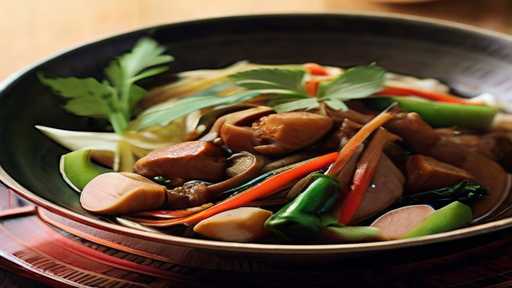
- 1. Preparation is Everything:
- • Cooking. Before you begin, cut and prepare all your ingredients. Stir-frying is a simple process. Preparing everything keeps you organized and prevents overcooking.
- 2. Select the appropriate material.
- • We use fresh, high quality ingredients. Choose firm tofu, fresh vegetables, and the best-tasting soy sauce.
- 3. Control the heat:
- • Stir-frying requires high heat, but be careful not to burn the ingredients. Use a wok or wide skillet to cook evenly and control the heat.
- 4. Be careful with oil:
- • Use oil with a high smoke point. B. Vegetable oil or peanut oil. Add oil to the hot wok just before adding ingredients to prevent sticking.
- 5. Get a Sizzling Wok:
- • Verify the wok’s temperature before adding the items. The hissing sound when the ingredients hit the pan indicates the right temperature for quick baking.
- 6. Do not overfill the wok with water.
- • Cook in batches if necessary. If you overcrowd your wok, it will steam instead of stir-fry, which can result in mushy vegetables and unevenly cooked proteins.
- 7. Perfectly Cooked Vegetables:
- • Aim for crispy and tender vegetables. Fry them quickly to preserve their bright color, nutrients, and satisfying texture.
- 8. Sauce Balance:
- • Adjust the amount of soy sauce and other seasonings according to your preference. Taste and adjust the seasoning with extra chili sauce. If you prefer less salt, reduce the soy sauce.
- 9. Protein Adjustments:
- • Feel free to swap tofu for chicken, beef, shrimp, or your favorite protein. Adjust the cooking time accordingly to ensure the protein is fully cooked, but not overcooked.
- 10. Adding Fresh Herbs:
- • Add fresh herbs such as coriander, Thai basil, or mint just before serving to enhance flavor. Adds freshness and complexity to stir-fries.
- 11. Noodle Experimentation:
- • Fat Siew traditionally uses wide rice noodles, but you can also try other types of noodles, such as egg noodles or rice sticks, depending on your preferences and dietary restrictions .
- 12. Garnish for visual appeal:
- • Garnish with sliced scallions, crushed peanuts, or lime wedges to enhance visual appeal and add extra flavor.
- 13. Careful Seasoning:
- • Taste food before serving and adjust seasoning as needed. A pinch of sugar or a squeeze of lime juice will balance the flavors perfectly.
- 14. The Magic of Leftovers:
- • Stir-fried Phat Sheew makes great leftovers. Store in an airtight container and heat in a hot pot for a quick and delicious meal the next day.
- 15. Enjoy the process:
- • Stir-frying is a dynamic and quick cooking method. Enjoy the process and don’t be afraid to experiment with flavors and ingredients to make your own dishes.
Suggestions for quickly and easily serving Phat Si-io stir-fry at home:

- 1. Presentation:
- • Transfer the Stir-Fried phat Si-io to large plates or individual plates to ensure attractive presentation.
- • Consider using bright, contrasting dishes to highlight colorful ingredients.
- 2. Side Dishes:
- • Add freshness and color to dishes by scattering freshly chopped green onions or cilantro over the pot.
- • Place a few lime or lemon wedges on the side of the bowl to add a zesty citrus flavor.
- 3. Acompaniments:
- • Serve the stir-fried fat si-io over steamed jasmine rice or rice noodles to absorb the flavorful sauce.
- • To add texture and nutty flavor, add crushed peanuts to a small bowl.
- • Consider adding sliced cucumber or pickled vegetables for a refreshing contrast to the rich flavor.
- 4. Condiments:
- • Place a bottle of soy sauce, fish sauce, or chili oil on the table so guests can adjust the seasonings to their liking.
- 5. Table Setting:
- • Set the table using chopsticks and individual serving spoons for an authentic feel.
- • For visual appeal, consider placing colorful table runners or napkins to compliment your food.
- 6. Drink Pairings:
- • Pair Phat Si-io Bread with a light, refreshing drink such as iced green tea, citrus-infused sparkling water, or a light lager.
- 7. Atmosphere:
- • Create a cozy and inviting atmosphere by dimming the lights and playing soft Asian-inspired music in the background.
- 8. Serving Tips:
- • Encourage guests to stir the pan well to distribute the flavors evenly.
- • For an extra citrus flavor, we recommend sprinkling a little lime or lemon over the dish just before cooking.
Leftovers and Storage Methods for Quick and Easy Phat Si-io stir-fry at Home:
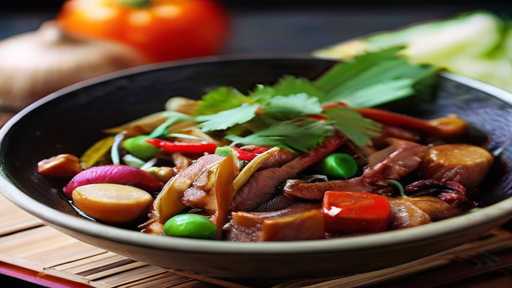
- How to Store Leftovers:
- 1. Cooling Process: To avoid condensation and bacterial growth, stir-fry the phat Si-io before storing. Let stir-fry cool to room temperature.
- 2. Airtight container: Transfer leftover stir-fry to an airtight container. Make sure the container is made of material suitable for refrigeration.
- 3. Refrigerate: Immediately place sealed container in refrigerator. Stir-fried phat si-io can be safely stored in the refrigerator for 3-4 days.
- 4. Freezing (optional): If you don’t plan on eating leftovers within a few days, consider freezing them. Place the bread in a freezer-safe container, leaving room for expansion. Label containers with dates for easy tracking. Frozen phat, si-io, and stir-fried foods can be stored for up to 2 to 3 months.
- Reheating Instructions:
- 1. Thaw (if frozen): If the pot is frozen, thaw it in the refrigerator overnight.
- 2. Reheat on the stovetop: For best results, reheat the Phat Si-io bread on the stovetop. Heat a frying pan over medium heat and add a little oil. Stir leftovers, stirring frequently to ensure even heating. This method helps preserve the texture and flavor of the dish.
- 3. Reheat in the microwave (alternative method): If time is limited, you can use the microwave. Place part of the pot in a microwave-safe bowl and cover with a microwave-safe lid or microwave-safe plastic wrap. Heat over medium heat in short intervals, stirring occasionally to evenly distribute the heat.
- 4. To warm the oven (optional): Preheat the oven to a low temperature of approximately 150°C (300°F). Place the pot on an oven-safe plate, cover with foil, and heat until warmed through. This method is best for large quantities.
- 5. Check doneness: Regardless of the reheating method, the internal temperature must reach at least 74°C (165°F) to ensure that the Phat Si-io Bread is safe to eat. Please Confirm.
Quick and Easy Phat Si-io stir-fry Nutritional Information (per serving):
- • Calories: Approximately 350 kcal
- • Fat: 15 g
- • Saturated fat: 3 g
- • Trans fat: 0 g
- • Protein: 20 g
- • Carbohydrates: 40 g
- • Dietary fiber: 5 g
- • Sugars: 8 g
- Note: Nutritional values are based on a standard fat siew stir-fry recipe using common ingredients such as rice noodles and soy sauce.
Health benefits: Quick and easy Phat Si-io stir-fry at home:
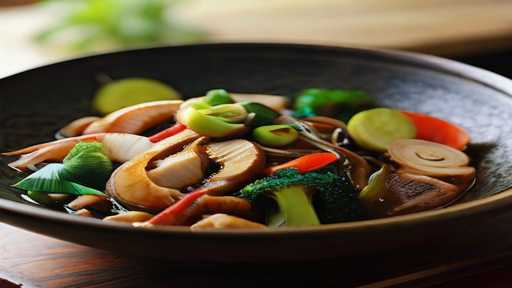
- 1. Nutrient-rich ingredients: Stir-fried fat si-io usually includes: Contains a variety of fresh vegetables and proteins. (tofu, chicken, shrimp, etc.) and rice noodles. These ingredients provide a variety of essential nutrients such as vitamins, minerals, and antioxidants to support overall health.
- 2. Balanced Meal: The combination of vegetables, proteins and carbohydrates in Phat Si-io bread creates a balanced meal. This balance facilitates blood sugar regulation, offers long-lasting energy, and encourages fullness.
- 3. Less in unhealthy fats: When you cook at home, you have control over the cooking methods and ingredients. By choosing lean proteins and minimizing healthy cooking oils, you can keep stir-fries free of unhealthy fats and support heart health.
- 4. Adaptable to dietary preferences: Phat Si-io breads are versatile and can be adjusted to suit different dietary preferences. Whether you follow a vegetarian, vegan, gluten-free, or low-carb diet, you can customize the ingredients to suit your specific dietary needs.
- 5. Increase your vegetable intake: Roasting vegetables retains their nutritional value better than boiling or overcooking them. Eating a variety of colorful vegetables in your phat si-io stir-fry increases your fiber intake, which supports digestion and gut health.
- 6. Reduce Sodium: When you make phat si-io at home, you can control the amount of soy sauce and other seasonings you add to your dish. This can help control sodium levels, promote heart health, and control blood pressure.
- 7. Encourage cooking at home: Cooking at home allows you to make healthier choices and control portion sizes. This helps with weight management and a healthier lifestyle compared to eating out frequently or eating processed and packaged meals.
- 8. Fun and Mental Health: Cooking and enjoying delicious meals is a rewarding and enjoyable experience. Taking the time to make a phat Si-io stir-fry at home can have a positive impact on your mental health, reducing stress and promoting a sense of accomplishment.
Variations of ”Phat Si-io stir-fry” that you can easily make at home.
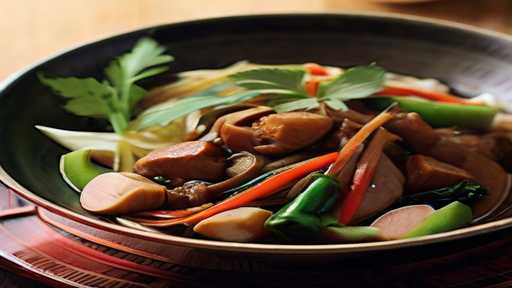
- 1. Vegetarian options:
- • Replace the meat with tofu or your favorite vegetables such as bell peppers, broccoli, or peas.
- • Consider adding firm tofu or tempeh for extra protein.
- 2. Seafood Twist:
- • Replace meat with shrimp, scallops, or a combination of seafood for a flavorful seafood stir-fry.
- • Enhance the flavor of seafood by adding fish sauce or seafood seasoning.
- 3. Spicy Kick:
- • For a spicy twist, add sliced Thai bird chili or crushed red chili flakes.
- • Consider adding a teaspoon of Sriracha or your favorite hot sauce for extra spiciness.
- 4. Low-carb options:
- • Use cauliflower rice in place of regular rice for a low-carb alternative.
- • Increase the vegetable content and reduce the amount of soy sauce for a lighter, carbohydrate-conscious version.
- 5. Citrus Infusion:
- • Add grated orange or lime zest for a citrus flavor.
- • If you want to add a tangy flavor, add fresh lime or orange juice to the pan just before serving.
- 6. Ginger Garlic Boost:
- • Increases the amount of ginger and garlic for a more intense flavor profile.
- • For a bold, aromatic touch, consider adding a tablespoon of chopped fresh ginger.
- 7. Add Nuts:
- • Just before serving, sprinkle chopped peanuts or cashews on top for added crunch.
- • You can also add a tablespoon of peanut butter to the sauce for a nutty flavor.
- 8. Mushroom Magic:
- • Mixing various mushrooms such as shiitake and oyster mushrooms increases the umami flavor.
- • Consider using mushroom soy sauce for even more mushroom flavor.
- 9. Sesame Sensation:
- • For a rich, nutty flavor, drizzle with toasted sesame oil in the pan just before serving.
- • Decorating with sesame seeds will make it even more chewy.
- 10. Filled with herbs:
- • For a fresh kick, mix in fresh herbs like coriander, basil, or mint just before serving.
- • Experiment with different herb combinations to find your favorite flavor profile.
- 11. Sweet and Savory Variations:
- • Add 1 tablespoon of honey or maple syrup to the sauce for a slightly sweet taste.
- • If you want to add some sweetness, try sweet noodle sauce or hoisin sauce.
- 12. Fruity Fusion:
- • Add pineapple chunks or slices for a tropical flavor.
- • For a fruity, spicy kick, try adding mango or orange juice to the sauce.
- 13. Crispy Texture:
- • Brush meat or tofu with cornstarch before frying to create a crispy texture.
- • If you want an extra crunch, add a few shredded carrots or water chestnuts.
- 14. Green Power:
- • Add leafy greens like spinach, kale, and bok choy to boost nutritional value.
- • Consider adding bean sprouts for more crunch and freshness.
- 15. Coconut Infusion:
- • Replace some of the soy sauce with coconut aminos for a slight coconut flavor.
- • Garnish with grated coconut and chopped coriander for a tropical touch.
- 16. Five Spice Powder Elegance:
- • Add a pinch of Chinese Five Spice Powder for added flavor.
- • Combine this with a little rice vinegar for a balanced and sophisticated taste.
- 17. Miso Magic:
- • Adding a tablespoon of miso to your sauce will add richness and flavor.
- • Add mirin and sake to create an authentic Japanese style.
- 18. Improved Egg Drops:
- • Create an egg drop effect by beating the eggs and stirring them in the pot during the last few minutes of cooking.
- • Creates a silky texture and richness.
- 19. How to enjoy cilantro-lime:
- • Just before serving, add chopped cilantro and fresh lime juice to the pan.
- • This combination delivers citrus freshness in every sip.
- 20. Tomato Tango:
- • Add cherry or sun-dried tomatoes for a sweet and tangy flavor.
- • Using tomato paste in sauces concentrates the tomato flavor.
Recipe Notes: Phat Si-io stir-fry

- 1.History and Cultural Significance: Phat Si-io, also known as Pad Si-io or Pad Si-io, is one of his Thai and Chinese dishes. A classic cousin of Thailand. Its name means “fried in soy sauce” and is often associated with street vendors in Thailand. This dish typically consists of wide fried rice noodles with a flavorful sauce, meat (usually pork or chicken), and Chinese broccoli. It has roots in Thai and Chinese culinary traditions, contributing to its unique flavor.
- 2. Noodle selection: Wide rice noodles are traditionally used, but you can experiment with different types of noodles depending on your personal preference. Flat rice noodles are best, but you can also use egg noodles or udon noodles to change the texture.
- 3. Soy Sauce Variations: The unique flavor of this dish comes from the sweet and savory soy sauce used in the hot pot. You can try different types of soy sauce. Light soy sauce with a mellow taste, or koikuchi soy sauce with a darker color and richer flavor. Additionally, a little drizzle of oyster sauce will enhance the flavor of the sauce even more.
- 4. Protein Choice: Pork and chicken are common at phat si-io, but feel free to customize your dish with your favorite protein. Shrimp, beef, tofu, or a combination of meats go well together. Slice or dice your protein thinly so it cooks quickly and evenly.
- 5. Add veggies: The traditional green vegetable used in phat Si-io is Chinese broccoli, but you can also substitute broccoli, bok choy, or snap peas. The key is to choose vegetables that can withstand the heat of stir-frying and do not become too soft.
- 6. Preparation Tip: To ensure a smooth cooking process, make sure all ingredients are prepared and ready to use before you start frying. This dish is quick to prepare, so it’s important to have everything on hand.
- 7. Wok or frying pan: Woks are traditionally used for stir-frying, but large pots are also suitable. The key is to have a hot cooking surface to achieve the desired smoky flavor from frying at high temperatures.
- 8. Garnish and serve: A pinch of chopped green onion and a pinch of white pepper add extra freshness and flavor. Serve warm and enjoy this delicious Thai stir-fry on its own or with jasmine rice.
- 9. Customization: You can customize your food according to your taste without any hesitation. Try making your own sauce by adjusting the sweetness, saltiness, and spiciness of the sauce to your liking!
FAQ: Phat Si-io stir-fry
- FAQ 1: What are the main ingredients needed for Phat Si-io Bun? Can I substitute them?
- Answer: The essential ingredients for Phat Si-io stir-fry include wide rice noodles, soy sauce, and oysters. Includes sauce, garlic, broccoli, and your choice of protein (chicken, beef, tofu, etc.). These are traditional ingredients, but feel free to adapt them to suit your tastes and dietary restrictions. You can replace the protein and vegetables with whatever suits your tastes. However, keep in mind that the unique taste of fat siew comes from the combination of soy sauce and oyster sauce. Therefore, try to maintain balance to get the authentic taste.
- FAQ 2: Can I make the Phat Si-io stir-fry in advance? How should I store leftovers?
- Answer: Yes, you can prepare the Phat Si-io stir-fry in advance. And it becomes a simple meal. However, for optimal texture and flavor, it’s best to cook and sauté your pasta just before serving. If If you have any leftovers, put them in the fridge in an airtight container. When reheating, add water or stock to the pot to prevent it from drying out. Heat again in a skillet or microwave until well cooked. Please note that the noodles may become a little soft when reheated. Therefore, we recommend consuming leftovers within 2-3 days for the best taste and texture.
In summary, this “Quick and Easy Phat Si-io stir-fry” recipe includes a simple and quick preparation method. The key points are the use of readily available ingredients, the quick cooking process, and the ease with which the flavorful Phat Si-io stir-fry can be prepared at home.


